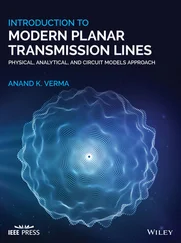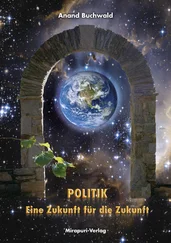Without belittling these attempts at maintaining distinctive traditions of creative and artistic expression, at a theoretical level this overemphasis on preservation should also be seen as being conceptually problematic because it takes a sanitized view of what culture means. Culture is seen as a thing out there that can be identified, mapped, practiced, and preserved. Such a conceptualization of culture essentializes and naturalizes what is socially and politically constructed and contested. It ignores the fact that culture is a "dynamic mix of symbols, beliefs, languages and practices which people create, not a fixed thing or entity governing humans" (Anderson and Gale 1992, 3). Cultural identities, far from being eternally fixed in some essentialized past, are actually subject to the continuous play of history, culture, and power. Tibetan culture is as much a process as it is a product of particular historical processes. An explicit recognition of this would certainly challenge the dominant tendency to make exilic "Tibet" fit Exotica Tibet.
The effect of commodification and tourism on particular expressions of "authentic" Tibetan culture is also important. As Wood argues, tourism affects not only the ways in which ethnic identities are asserted but also which ethnic markers are chosen to symbolize group membership and culture (1998, 222). The desire to attract tourists has played a significant role in the depiction of Dharamsala as the Little Lhasa.
Even the names of many establishments in McLeod Gunj, particularly the commercial ones, highlight the importance of tourism and the desire to appeal to outsiders' idea of Tibet as a Shangri-la. For instance, on the Jogibara Road this is exemplified in names such as Yak Restaurant, Snow Land Restaurants, Hotel Shangri -la, Snow Lion complex (hotel, restaurant, and medical store), and Travel Tibet Tailoring Shop. The fact that many such establishments are owned by local Indians goes to show that a primary motive for such naming practices is to appeal to tourists. In fact, this dynamic is also underlined by the presence of other shops with names that are unabashedly Orientalist, such as Dreaming Oriental Carpet Cottage Handicrafts, Royal Asia Art, Heaven Art, and Rising Horizon Cafe. It is hard to imagine the old city of Lhasa having place-names such as Shangri-la, Dreaming Oriental, or Yeti before its incorporation into the international tourism networks. My hypothesis is that while Tibetan names such as Amnye Machen Institute, Gangchen Kyishong, and lhagyal-ri reflect a desire to re-create a familiar environment, other more Orientalist names such as Shangri-la and Travel Tibet pander to exoticized representations of Tibet. This is supported by the fact that while the former are predominantly used in Tibetan governmental and nongovernmental institutions, the latter are found exclusively in commercial establishments.
The preservation ethos is not hegemonic in the Tibetan diaspora. Counterhegemonic spaces are available in Dharamsala for innovative and more contemporary practices of culture. Even these practitioners are not in opposition to traditional culture but complementary to it. For instance, though Norbulingka's catalogs and brochures fail to mention this, the institute has a section where young artists work on contemporary themes. Moreover, even the traditional cultural practices are often laden with contemporary political meanings. The Namgyalma Stupa [88]in the center of McLeod Gunj, erected during the 1960s as a memorial to the Tibetans who lost their lives fighting against the Chinese, is a good example of this combination of traditional religion with modern politics. Similarly, the dolls made in the traditional style at Norbulingka carry "Free Tibet" badges.
The political context of occupation and coercion is always present even in the space provided for traditional art and crafts. Despite the dominance of the preservation ethos, the focus of identification has now shifted from local contexts to a national one-instead of individual localities and regions, all of Tibet is collectively imagined as the homeland to which the refugees hope one day to return.
Rather than seeing culture as informing politics and vice versa, the entire category of culture has to be understood as political. For instance, both the desire and the attempt to preserve a culture under threat are acts of resistance to dominant forces of modernization and to the Chinese occupation. Therefore, we must consider not only the way in which politics affects the works of art but in what sense an artwork may itself constitute a political act or statement rather than being conceived merely as the result of a political intention (Millon and Nochlin 1978). It is difficult to miss the centrality of the Tibetan political cause in McLeod Gunj's landscape-"Free Tibet," "Boycott Chinese Goods," and similar stickers and posters are glaringly visible. The symbolic geography of Dharamsala in this sense is a geography of resistance as much as it is a geography of regeneration. In other words, the cultural is political.
An integral part of Dharamsala's geography is the festivals and various other events occurring throughout the year. Rather than seeing the festivals as merely reflecting religious beliefs or political rituals, we can examine the techniques and dynamics through which the narratives, symbolic spaces, and collective fantasies of communal identities are reproduced and regulated among the Tibetans and their supporters. Examples of such festivals that are replete with multiple meanings are Losar (February 12), Tibetan Uprising Day (March 10), the Dalai Lama's birthday (July 6), Democracy Day of Tibet (September 2), and the commemoration of the awarding of the Nobel Peace Prize to the Dalai Lama (December 10). Connerton's observation that "the ritual performances and commemorative ceremonies are important in building up collective memory, which in turn is crucial for the development of a sense of home" (in Kong and Yeoh 1997, 217) is also applicable in the case of the Tibetan diaspora.
Though the focus is on the preservation of culture, a visible feature of the symbolic geography of Dharamsala is hybridity. In their everyday life, Tibetan refugees in Dharamsala and elsewhere in South
Asia negotiate with the popular culture of India; it should come as no surprise, then, that Bollywood has a very significant influence on the identity of many Tibetans (see Diehl 2002). Everywhere I went, I found a striking similarity between Tibetan songs and songs from both popular Hindi films and Western pop music.
However, such observations, while complicating the notion of preservation of a "pure" culture, do not militate against a more sophisticated conception of Tibetan culture. The new generation may not practice "authentic" versions of culture, but, as evidenced from the activities of the Tibet Youth Congress, their creative negotiations with dominant cultures around them do not hamper their po-liticization. On the contrary, the ability simultaneously to negotiate and resist varied cultural practices makes the diasporic Tibetans well placed to carry forward their political movement in a rapidly changing world. The simultaneous negotiation, appropriation, and resistance are key features of postcoloniality.
CHALLENGING THE DOMINANT PARADIGM: READING CULTURAL IDENTITY IN TERMS OF ROOTS AND ROUTES
What does a postcolonial reading strategy look like? How can it seek to contextualize a politics of place and identity that takes into account the politics of representation? Here I wish to make six interrelated points relating to Tibetan identity-roots and routes of culture are complementary; identity is discursively produced; Exotica Tibet plays a productive role; the Dalai Lama's role is vital; an image of the "homeland" is crucial; and, finally, Tibet is a re-imag(in)ing construct.
Читать дальше












